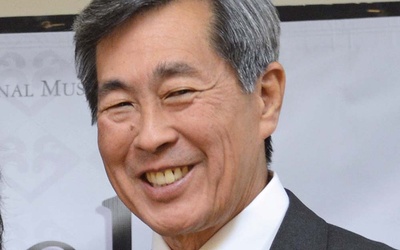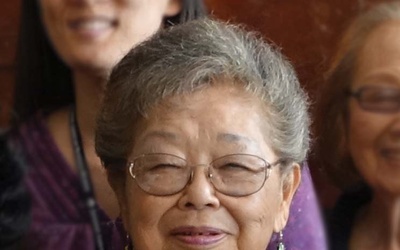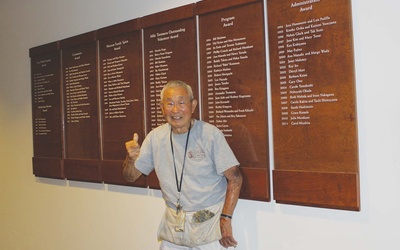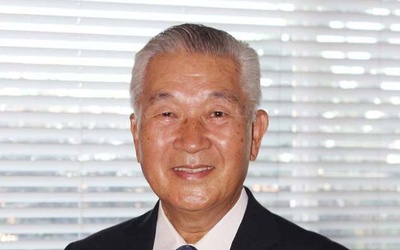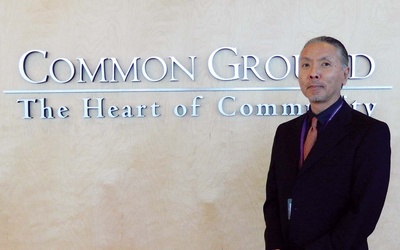Voices of the Volunteers: The Building Blocks of the Japanese American National Museum
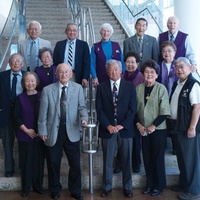
This series introduces the experiences of the volunteers at the Japanese American National Museum from the book Voices of the Volunteers: The Building Blocks of the Japanese American National Museum, which was sponsored by Nitto Tire and published by The Rafu Shimpo.
A few years ago, Nitto Tire began working with the Los Angeles Japanese-language newspaper The Japanese Daily Sun to interview the Japanese American National Museum (JANM)’s volunteers. When Nitto Tire approached The Rafu Shimpo in late 2014 to edit and compile these interviews into a book, we were happy to do it. As a former JANM intern, I knew how important the volunteers were, how hard they worked, and how much their presence humanized history.
In the process of editing this book, I read each story so many times I began to dream about them. I know that I’m not alone in this absorption. Everyone who gave his or her time to this book lived within these stories and felt their effect. That’s the power of a first-hand account.When visitors come to JANM for a guided tour, they experience a similar kind of accelerated intimacy that brings the Common Ground exhibit to life. The volunteers have been putting a face to history for thirty years. For all that time, they have upheld the story of our community. It’s time now for us to uphold their stories.
Edited by Mia Nakaji Monnier with additional thanks to Contributing Editor Chris Komai; Japanese Editors Maki Hirano, Takashi Ishihara, and Ryoko Onishi; and Volunteer Liaison Richard Murakami. Interviews conducted by Tomomi Kanemaru (The Japanese Daily Sun), Alice Hama (The Japanese Daily Sun), and Mia Nakaji Monnier.
Presented by 
Stories from this series
Kenneth “Ken” Hamamura
March 28, 2016 • The Rafu Shimpo
Over the years, Ken Hamamura has assumed various roles at the Japanese American National Museum. As a donor, staff member, and volunteer, he learned the importance of preserving and sharing our stories and artifacts to create a legacy for future generations. Inspired by the Museum’s ongoing mission, Ken started to focus on his family history and hopes to build an enduring legacy for his daughter and grandsons. For some time now, the retired Sansei with Kibei parents has been researching …
Mary Karatsu
March 14, 2016 • The Rafu Shimpo
“After I retired in 1993 as assistant to the president of a large nonprofit organization, I began my second career as a volunteer,” says Mary Karatsu. Indeed, she has been a prominent figure among community-based organizations like the Japanese American National Museum for many years, armed with determination and no small amount of charm. Her early inspiration came from a Caucasian lady who took her under her wing and taught her what it meant to serve others. “She was such …
Robert “Bob” Uragami
Feb. 22, 2016 • The Rafu Shimpo
“I am not a museum type of person,” says Bob Uragami. He had his first encounter with the Japanese American National Museum in 1991 when it was looking for artifacts for its first exhibition, Issei Pioneers: Hawaii and the Mainland, 1885–1924. Bob submitted a Japanese letter, dated about 1916, which had belonged to his mother. The museum translated it for him. It was a letter from his father, who was living in the U.S., to his future bride. “Contrary to what …
Kihachiro Tajima
Feb. 8, 2016 • The Rafu Shimpo
Kimio Tajima was an American-born Nisei, but he died a Japanese soldier, while at war in New Guinea. He was 28 years old. His son, Kihachiro, was only ten months old when Kimio was drafted. Kihachiro grew up being called a war orphan, not remembering his father’s face. When he was in elementary school, he asked his mother, “Why am I a war orphan?” She told him, “Your father died in war as a Japanese soldier, but he was born …
Nahan Gluck
Jan. 25, 2016 • The Rafu Shimpo
As a volunteer docent at the Japanese American National Museum, Nahan Gluck leads his tours with pride, compassion, and conviction. What many find surprising, and maybe a bit refreshing is that this particular docent does not have an ounce of Japanese in him, biologically that is. Born in New York, Nahan moved to California when he was six years old. One accidental encounter in the 1950s changed his life in ways he could never have imagined, he befriended Kazuto Hirata, …
Nao Magami
Jan. 11, 2016 • The Rafu Shimpo
When Tokyo native Nao Magami was a student at California State University in the 1970s, he wondered why his Japanese American friends only spoke English, unlike the Chinese and Korean American students, many of whom spoke their parents’ languages. One day in an Asian American studies class, he watched a film, Farewell to Manzanar, which depicted the internment experience of Japanese Americans. After watching it, he felt like he understood the reason for the first time. More than 30 years …

